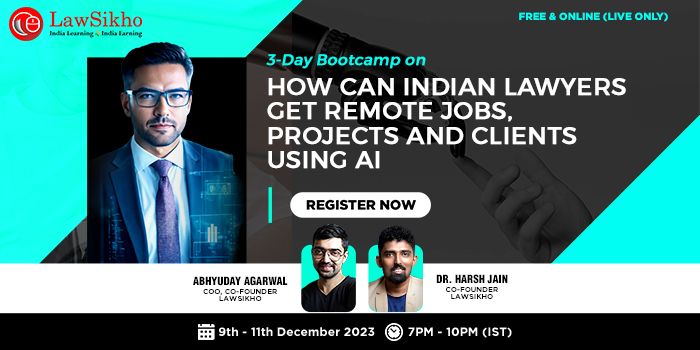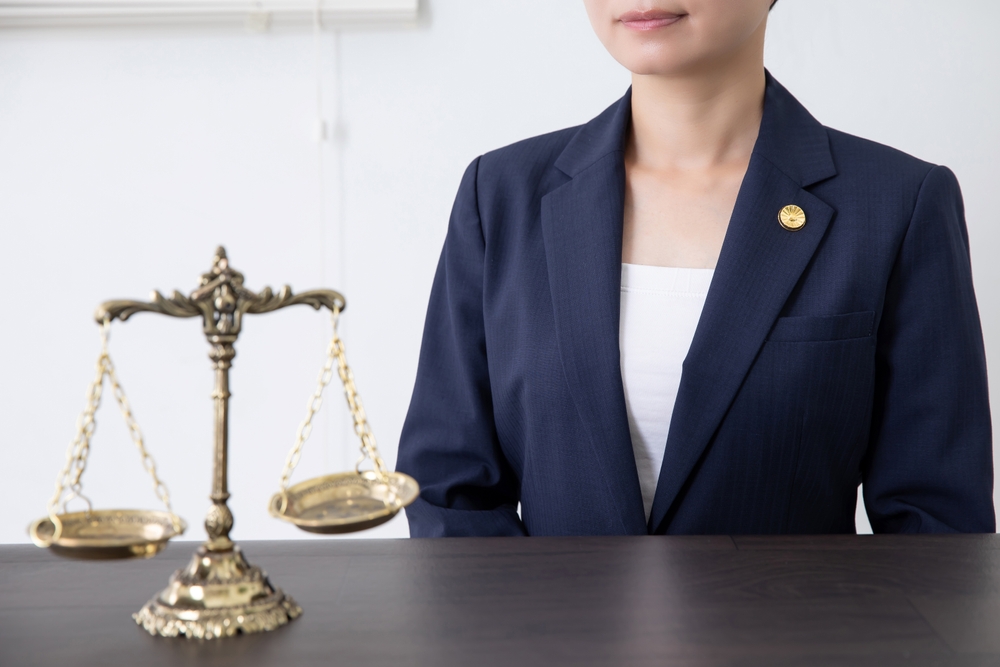This article is written by Heba Ali, a BBA LLB student at Symbiosis Law School, Noida. This article discusses the doctrine of severability and its features in detail.
This doctrine of severability is also known as the doctrine of separability. The word “to the extent of the inconsistency or contravention” makes it clear that when some of the provision of a statue when some of the provisions of a statute becomes unconstitutional on account of inconsistency with fundamental rights, only to the repugnant provision of the law in question shall be treated by the courts as void, and not the whole statute.
The doctrine of severability means that when some particular provision of a statute offends or is against a constitutional limitation, but that provision is severable from the rest of the statute, only that offending provision will be declared void by the Court and not the entire statute.
The doctrine of severability says that if good and bad provisions are joined together by using the word ‘and’ or ‘or’ and the enforcement of good provision is not made dependent on the enforcement of the bad one that is the good provision can be enforced even if the bad one cannot or had not existed, the two provisions are severable and the good one will be upheld as valid and given effect to. On the other hand, if there is one provision which is capable of being used for a legal purpose as well as for illegal one, it is invalid and cannot be allowed to be used even for the legal purpose.
In this doctrine it is not the whole act which is held invalid for being inconsistent with the Part three of the constitution which is given to the citizens of India. It is only those parts are inconsistent which are violative of the fundamental rights. But just the part which violates the fundamental rights is separable from that which does not isolate them. If it there that the valid portion is combined with the invalid portion that it is impossible to separate them. Then in such cases the court will leave it and declare the whole Act as void. This process of doing it is known as the doctrine of severability.
The honourable Supreme Court of India has used this doctrine in the case of A.K Gopalan vs State of Madras it was held by the court that the preventive detention should be removed from section 14 then it would be valid and by removing this will not affect the act and it will remain valid and effective. The doctrine was further was also applied in D.S Nakara vs Union of India where it was that the act remained valid and the portion which was not consistent was declared as invalid and this was because it was easily separated from the valid part. Also, State of Bombay vs F.N Balsara and here it was held that the provision of the Bombay Prohibition Act, 1949 where the entire act was declared as void and it did not affected the rest of the part and there was no need to declare the whole statute as void.
The doctrine of severability was even used in the case of Minerva Mills vs Union of India where section 4 of 55 of the 42nd Amendment Act, 1976 was struck down for being beyond the amending power of the Parliament and then it had declared the rest of the Act as valid. Then in another case of Kihoto Hollohan Vs Zachillhu which is very famously known as the defection case. In this case the paragraph 7 of the Tenth Schedule which was first inserted by the 52nd Amendment Act of 1985 was declared as unconstitutional because it had violated the provisions under Article 368(2). But, the whole part was not declared unconstitutional. So, the rest of the Tenth Schedule excluding paragraph 7 was upheld by the Constitution.
The doctrine of severability was considered by the supreme court of India in the case of R.M.D.C vs Union of India and the rules regarding severability was laid down in this case-
- The intention of the legislature behind this is the determine whether the invalid portion of the statute can be severed from the valid part or not.
- And if it happens that the both the valid and invalid parts can’t be separated from each other then the invalidity of the portion of the statute will result in invalidity of the whole act.
- Even if it happens that the invalid portion is separate from the valid portion.
It is the power and duty of the courts to declare law which is inconsistent with the constitution of India to be unconstitutional. The foundation of this power of judicial review as it was explained by a nine-judge bench is the theory that the constitution which is the fundamental law of the land, is the will of the people, while the statute is only the creation of the elected representatives of the people, when therefore the will of the legislature as declared in a statute, stands in opposition to that of the people as declared in the Constitution, the will of the people must prevail.
Also, the power to annul the acts of the executive and the judiciary which violates the constitution is given by the Constitution itself in the judiciary. But, the same is not part of the legislature which is the creature of the constitution or one can say a law-making body. It is not correct to say that view of the legislators must prevail because they are answerable to the people. In determining the constitutionality of a provision the court will first question that whether the law is constitutional or not because there will be a possibility that it might be contravening a lot of articles that is enshrined in the constitution.
The practice of Doctrine of Severability has been in practice for a very long time and it is not a new thing. It has been adopted in many countries like United Kingdom, Australia, United States of America, Malaysia and so as well in our country which is India. In England, United Kingdom the doctrine of severability goes back when it had originated in the case of Nordenfelt v. Maxim Nordenfelt Guns and Ammunition Company Ltd. In this case Then in other countries like the United States of America where the first case of doctrine of severability was decided in the year 1876. After this a question evolved which question that if the Congress knew about the invalid portion had it enacted it the first time. In this particular case the case was centred around the fifteenth amendment of the american constitution that spoke about the voting rights not being denied to the American male citizen on the basis of color or race etc.
Then in the very popular case of Champlin Refining Co. v. Corp. Commission of Oklahoma where an oil refining company had challenged several provisions of the Oklahoma statute which further argued the various provisions that had violated the Commerce Clause and even the fourteenth amendment that talks about the due process and equal protection clauses. And in determining whether any of these or any one of them could be struck down and further separated from the residue of the oil and gas statute at issue. In the year 2006 the Supreme Court of the United States of America propounded the three principles as an underlying rationale. Then in the case of Ayotte vs. Planned Parenthood of N. New Eng., here also the court had laid down the three principles of severability.
In another case which is Cardegna. Vs Buckeye Check Cashing that was in the year 2006 where the defendant which was the Buckeye took a loan amount from a subsidiary that was a business. Later on again he took another loan amount which was higher than the loan amount which was previously taken and then he was later unable to pay back. He then filed a class action suit with the help of a lawyer. The suit was regarding that the interest rates charged by the plaintiff were higher when compared with others that was charged by the company that was at least 45 percent higher than the prescribed normal rates. But, the court in Florida stated that it is not only one part of the contract that could be challenged but it needs to be the whole contract. And so this means that the doctrine of severability which earlier was thought could be applied cannot be applied now. Further the honourable Supreme Court of gave the decision and declared that the whole of the contract was void ab initio on the grounds that such void contracts that are absolutely void and useless from the initial stage itself.
The doctrine of severability has now it just been part of the western world but also has spread to the eastern countries of the world. Like from India to Malaysia and in Malaysia this doctrine was evolved in the very popular case which is Malaysian Bar & Anr. V. Government of Malaysia. When we talk about India with respect to the doctrine of severability then we need to study and understand how Article 13 of the Indian Constitution came into being. This doctrine works when it becomes evident that any part of the law offends the Constitution . When we talk about incontext of Indian Constitution then it will be the fundamental rights which is guaranteed by the Constitution. So, this doctrine will work especially when subjected to this part which is Part III of the Indian Constitution.
One can challenge the constitutionality of law but only if our rights are directly affected by a law. Then only we can question the constitutionality of the law. It follows in such ways-
When a person is outside the class that might be injured by the statute then he has no right to complain. Then where a statute affects bona vacantia, then there is no person who is competent to challenge the validity of such statute. Again, where the statute operates as a contract, either party to the contract is entitled to challenge the validity of the statute.
It is always on the person who attacks and tries to show that it is contravening the constitution then it is him on whom the burden is upon to show that courts that while performing its duties it has the constitutional principles by and its guidelines while laying down its decisions as it said in the case of Chiranjit Lal Chowdhury vs The Union Of India And Others. If it happens that the challenge is not on the provisions of the Constitution then the courts have to consider and make sure that it is intra vires and try to interpret the same. So, it is clear that the burden fully lies upon the person who questions the decision and challenges it in a court of law.
If something happens and the constitutionality of the act is challenged then the person must show that he has sustained some injury as a result of that or that he/she is in immediate danger of sustaining some direct injury as a result of the statute or law coming into force. And if it even abridge the fundamental rights of the person in any form then the aggrieved person has all the powers to approach the courts without waiting or delaying for the State to take some or any type of action. And if it happens that the person does not possess any of the fundamental rights then he/she cannot challenge the validity of the law on the grounds that it is inconsistent with a fundamental right. Even a corporation has a legal entity separate from that of its shareholders. Hence, in the case of corporations, whether the corporation itself or the shareholders would be entitled to impeach the validity of the statute and this will depend upon the question whether the right of the corporation or of shareholders have been affected by the statute that has been impugned.
When it happens that the fundamental rights of the company is impugned by the statute then it also affects the interest of the concerned shareholders then in such cases the shareholders also impugns the constitutionality of the statute. In such situations what happens is that the joinder of the company as co-petitioner would not bar relief to the shareholders even though the company is not a ‘citizen’ and so would not be entitled to relief. Also, the possibility of financial relief due to the management of the company being taken over by the government is sufficient to give locus standi to a shareholder.
Article 141 of the Constitution of India says that the honourable Supreme Court of India is binding on all the courts which is within the territory of India. For example, once if any law or any statute is declared unconstitutional by the Supreme Court of India then it shall be from that date onwards will be binding on all lower courts in India. The effect of this is that the decision operates as a judgement in rem against all the persons who may or is going to seek relief in any court in India. So, in further proceedings then there is no onus on the party to affected to establish its unconstitutionality again and then the court is bound to reject the law which is declared as invalid by the honourable Supreme Court.
The same thing is applied when the law has been declared to be unconstitutional partially. If the law is sought to be enforced in a case then in such cases no notice is to be taken by the Court of that part which has been declared by the Supreme Court as unconstitutional. In other words, it means that the Court will read the Statute in such a manner that the part of the section which has been declared as invalid as never existed before. If it happens that the person is prosecuted for the contravention of the section which has been declared as invalid then no onus is cast upon the accused to prove that his/her case falls upon and under that part of the section which has been held invalid. On the other hand, it happens that the prosecution cannot succeed unless it is proven that the accused has contravened that part of the section which is enforceable and valid after the honourable Supreme Court decision.
No distinction is made where a case where the law is declared to be invalid because of the lack of legislative competence and a case where it is declared invalid on the ground of contravention of a fundamental right. Even Article 245(1) of the Constitution of India lays down very specifically that the legislative power whether it is of Union or of a State Legislature is and will always remain subject to other provisions of the Constitution. The result is that when a legislature makes any law which is contravening a provision of the Constitution like say any of the fundamental rights then the position will remain the same as if they had no power to legislate over the subject-matter of the legislation at all. Then, accordingly, the declaration of invalidity of the law by the honourable Supreme Court goes through the legislative power in either of the cases as held many cases by the court itself.
Earlier back in the days there were a lot of confusion upon this topic when there is a constitutional amendment and because of this there is some effects on the unconstitutional statute. The ‘doctrine of eclipse’ can be invoked in the case of pre-constitution law which was valid when it had been enacted. But, there was some inconsistency with the constitution which came into existence subsequently, if and when the shadow is removed, the pre-constitution law becomes free from all kinds of infirmity.
But the thing is that the principle cannot be invoked in the case of a post Constitution law which is void ab initio. In view of Article 13(2), the fundamental rights constitute express limitations upon the legislative power of a legislature making a law after the commencement of the Constitution and no distinction can be drawn between a post-Constitution law which is ultra-vires that is beyond the legislative competence of the legislature and a law which contravenes a fundamental right. It is that a post-Constitutional law which violates a fundamental right is void ab initio and no subsequent amendment of the Constitution can revive such still-born law, unless such amendment is retrospective.
When a statute is declared unconstitutional by a Court of law then the Legislature cannot directly override that decision which is taken and further pronounce the statute to have been valid on the date of judgement. It is, however, so that the competence of the Legislature to a new law which is further free from the unconstitutionality and then provide that anything done under the offending law shall be deemed to have been under the new law and subject to its provisions.
A Proclamation of Emergency which is made under Article 352 is prospective in its operation. Article 358 in the Indian Constitution which frees the Legislature from the limitation which is laid down in Article 19 during the proclamation of emergency means during its continuance. But it does not operate to validate a law which is enacted prior to the Proclamation which was invalid owing to the contravention of Article 13(2). Then such laws will be void ab initio and cannot be revived by the proclamation of the emergency. So, now if any executive action which is taken in the exercise of any power in the hands by such a void law will also be invalid. Even though such action takes place after the commencement of the Proclamation or a continuation of pre-Constitution executive action.
The important question which has been there over the years was that whether a fundamental right could be waived which has been answered by the Constitution Bench of the honourable Supreme Court. Like for example in the case of Behram vs State of Bombay where the honourable Venkatarama J.had expressed the view that such of the rights as are for and in the interest of the individuals and is totally different from the interest of the general public, could be waived accordingly even the right which is guaranteed by Article 19(1) which also comes under this category.
But everyone else didn’t have the same viewpoint which is the majority that included Mahajan, C.J., Mukherjee, Bose and Hasan, JJ. And they expressed the viewpoint even without deciding the question which was mainly for the good of the individuals. This has also been laid into our Constitution on grounds of public policy and in pursuance of the objective declared in the Preamble itself. So, in the end the conclusion is that none of the fundamental rights could be waived.
Then again in the case of the Basheshar v. Commr. Of I.T., Justice Bhagwati and Subba Rao, JJ. have held that a fundamental right being in the nature of a prohibition addressed to the State, none of the fundamental rights in our Constitution can be waived by an individual and this declaration was given with what the majority have viewed in the Behram’s Case.
In the very famous case of Olga Tellis vs Bombay Corpn. where the Constitution bench has unanimously held that there cannot be any estoppel against the Constitution which is the supreme law of the land. Also, a person cannot waive any of the fundamental rights conferred upon him by the Constitution itself which is stated in Part III. In many of the cases there have been situations where the courts without even entering into the question of waiver, the Court has held that a person who has applied for an appointment to an office by an Act is not prevented from challenging on the ground that it violates his or her fundamental right which is guaranteed under Article 16.
There have been cases over the years where it has been held that if a person has gained any kind of benefits under statute then he/she cannot challenge its constitutionality or its validity in any case. Like in the case of Nain Sukh v. State of U.P. where the Supreme Court has observed that a person who had been allowed to contest an election which is being conducted on the basis of separate electorates which is formed on the communal lines then he/she cannot seek remedy under Article 32 of the Constitution of India after they are done with the election.



 Click here
Click here


